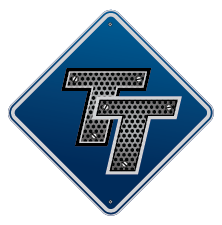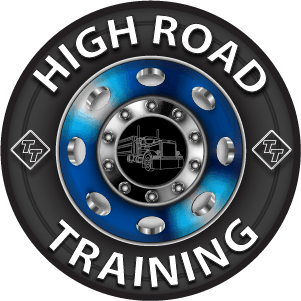CDL School - Hours In Truck Learning Compared To Observing
Topic 10119 | Page 1
Annee, the standard acceptable number is 160 hours of training. That being said, I don't know anyone who got 160 hours behind the wheel. Usually a truck driver training course consists of four weeks - one week of classroom, so that the student can get their permit - three weeks on a training pad or on the road. What I suggest to people is that they can really learn a lot by observing the other students as they are attempting to drive the truck. All of this is designed strictly to get you a Commercial Drivers license. The company sponsored schools are very fast paced, and are more like a try out for the team than they are a way for you to learn the things you need to know to be successful at this. If you can step up to the game enough to pass the driving exam, so that you can get that CDL , then you will get the time you need with a mentor on a truck.
It is a tough way to break into a new career, but it is the system that is in place. It just gets too expensive when they try to give individuals all the extra time they need, so we have to work within the structure that has been proven to be somewhat successful. I wish you the best - hang in there, and try your best to not only learn when yo are behind the wheel, but also when you are watching others behind the wheel.
CDL:
Commercial Driver's License (CDL)
A CDL is required to drive any of the following vehicles:
- Any combination of vehicles with a gross combined weight rating (GCWR) of 26,001 or more pounds, providing the gross vehicle weight rating (GVWR) of the vehicle being towed is in excess of 10,000 pounds.
- Any single vehicle with a GVWR of 26,001 or more pounds, or any such vehicle towing another not in excess of 10,000 pounds.
- Any vehicle, regardless of size, designed to transport 16 or more persons, including the driver.
- Any vehicle required by federal regulations to be placarded while transporting hazardous materials.

I got my cdl through my local branch college and though I always felt I wasn't getting enough hands on time, I was able to learn a lot by watching others when they attempted yard skills and such. In the end, we got more drive time and I passed my CDL tests both written and practical without problem. One thing to do is if you think you need more drive time ask the instructor if you could do some after hours driving or practicing. They train many classes of drivers at Swift and so they have a program in place that works for most people. Trust the program and always pay attention and you'll do great!
Phil
CDL:
Commercial Driver's License (CDL)
A CDL is required to drive any of the following vehicles:
- Any combination of vehicles with a gross combined weight rating (GCWR) of 26,001 or more pounds, providing the gross vehicle weight rating (GVWR) of the vehicle being towed is in excess of 10,000 pounds.
- Any single vehicle with a GVWR of 26,001 or more pounds, or any such vehicle towing another not in excess of 10,000 pounds.
- Any vehicle, regardless of size, designed to transport 16 or more persons, including the driver.
- Any vehicle required by federal regulations to be placarded while transporting hazardous materials.
Annee, hands-on-the-wheel time is important. But as Old School points out, the rest of the time you should be observing others. Do not "watch" them like you are watching TV. Observe is more active.
Watch (Yeah, I just used the word, but this is different!) how the wheels move and the trailer turns. In actually doing backing, I look to the invisible path the trailer tandems will roll. No need to really know where they sit at the moment, but, how will the wheels roll from where they are to where I want them to be.
At Swift, your instructors may talk about the "money cone" and some triangle or invisible extended lines. These are needed to get you through the course and to pass your CDL.
In the mean time, you need to watch and understand how the wheels move. I often suggest getting a toy truck to see how it all works together. You can see this from ground level as you watch other drivers. Don't be one of the bystanders smoking cigarettes and talking about Captain Kangaroo. On the range, you need to be a student observing 100% of the time.
CDL:
Commercial Driver's License (CDL)
A CDL is required to drive any of the following vehicles:
- Any combination of vehicles with a gross combined weight rating (GCWR) of 26,001 or more pounds, providing the gross vehicle weight rating (GVWR) of the vehicle being towed is in excess of 10,000 pounds.
- Any single vehicle with a GVWR of 26,001 or more pounds, or any such vehicle towing another not in excess of 10,000 pounds.
- Any vehicle, regardless of size, designed to transport 16 or more persons, including the driver.
- Any vehicle required by federal regulations to be placarded while transporting hazardous materials.
Tandems:
Tandem Axles
A set of axles spaced close together, legally defined as more than 40 and less than 96 inches apart by the USDOT. Drivers tend to refer to the tandem axles on their trailer as just "tandems". You might hear a driver say, "I'm 400 pounds overweight on my tandems", referring to his trailer tandems, not his tractor tandems. Tractor tandems are generally just referred to as "drives" which is short for "drive axles".
Tandem:
Tandem Axles
A set of axles spaced close together, legally defined as more than 40 and less than 96 inches apart by the USDOT. Drivers tend to refer to the tandem axles on their trailer as just "tandems". You might hear a driver say, "I'm 400 pounds overweight on my tandems", referring to his trailer tandems, not his tractor tandems. Tractor tandems are generally just referred to as "drives" which is short for "drive axles".
New Reply:
New! Check out our help videos for a better understanding of our forum features

















Preview:








 TT On Facebook
TT On Facebook
Hello- I am in Swift CDL school right now and I'm a little confused on what constitutes BTW time. The school I'm in seems to have too many students and not enough working trucks and of course this means not much actual BTW time. I'm nearing the end of my training and need a lot more practice - there is no way I would pass if I took the CDL test today. The information given by the schools seem to lump the on-the-road/backing/observation time into day increments (the school I'm in now shows 10 days for all three). I plan on talking to the school but I was hoping someone on this website would help with what is considered the norm for this part of training.
As always, I am very thankful for all the information this website offers. I'm a daily lurker, you have no idea how much help it has been to me. Thank you all for sharing your knowledge. Annee
CDL:
Commercial Driver's License (CDL)
A CDL is required to drive any of the following vehicles: